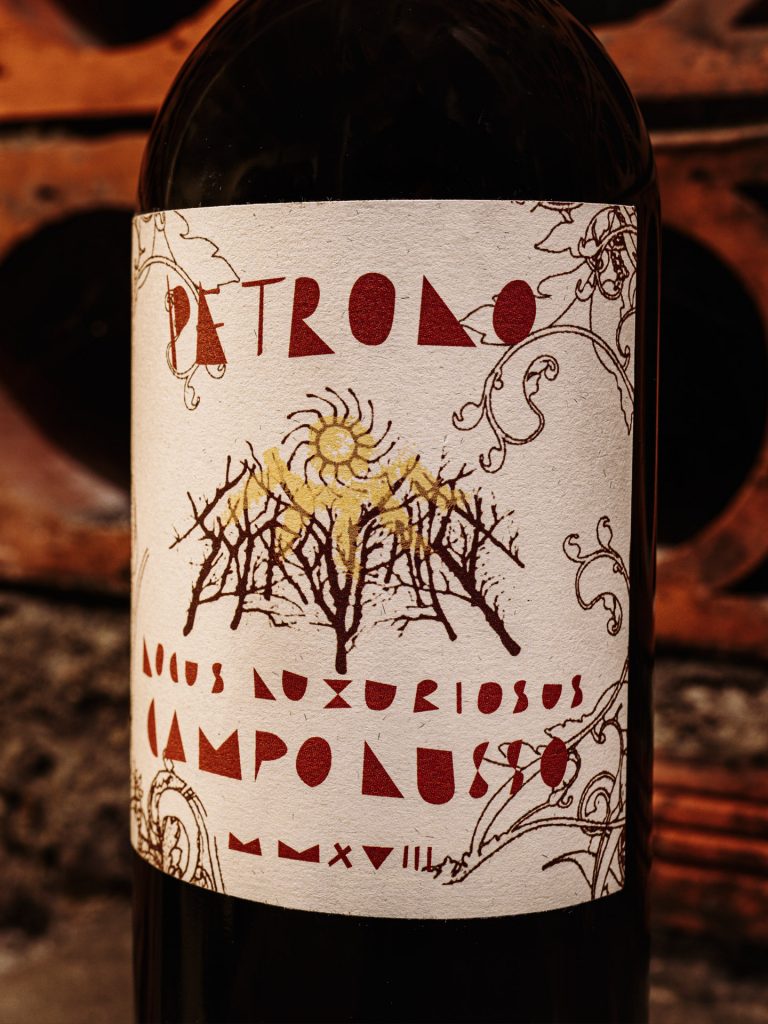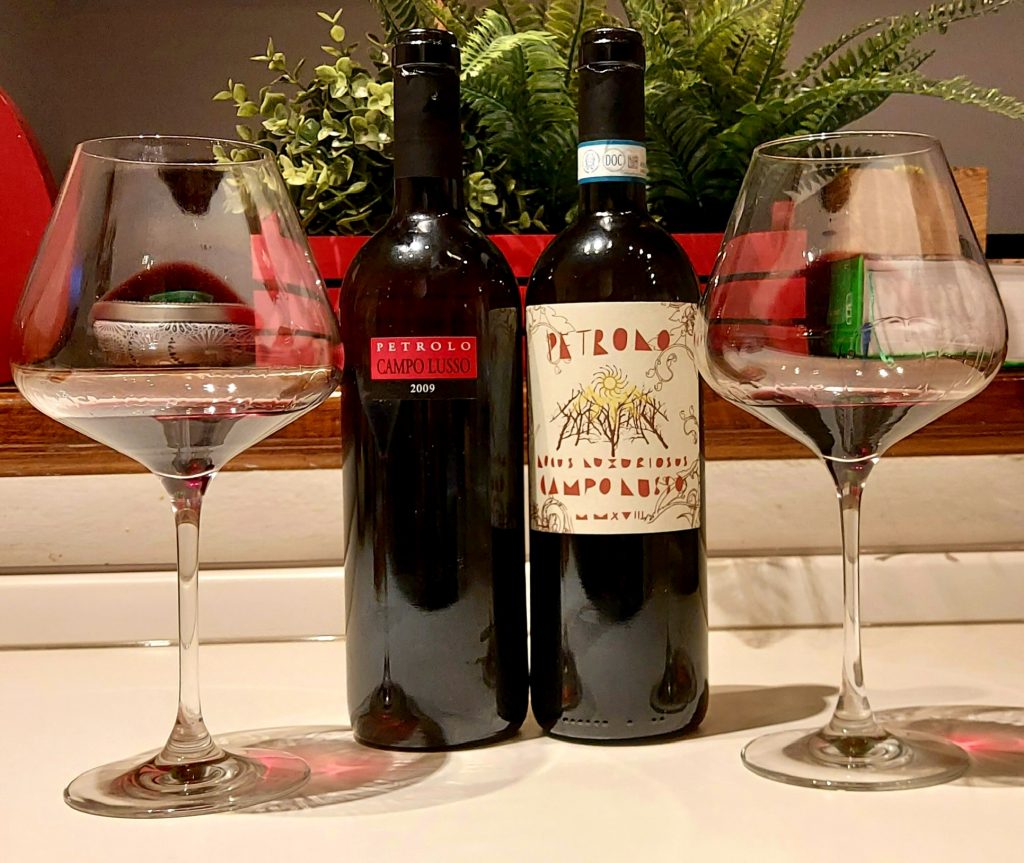22 Marzo 2021

Come si definisce l’identità di un vino? Attraverso quali tratti si disegna la sua riconoscibilità? L’uva, il terroir, o la mano del produttore? Questi elementi sono tutti fondamentali, ma ci sarà sempre un protagonista che emergerà sugli altri.
Quando si parla di vini a base Cabernet Sauvignon, solitamente è l’uva il fattore chiave che delinea la loro individualità. Per prima cosa, si tratta della varietà più coltivata al mondo, e già questo la rende tra le più familiari, ma soprattutto è dotata di proprietà organolettiche talmente peculiari da risultare estremamente riconoscibili. Peperone, foglia di pomodoro, colore intenso e struttura importante: un grande classico su tutte le tavole.
Tuttavia, esiste una zona in cui l’essenza del Cabernet Sauvignon non si esprime principalmente attraverso la sua uva: sto parlando della sua culla, ovvero Bordeaux. L’importanza e la fama dei suoi châteaux hanno scritto la storia trasformando il modo di consumare il vino, da semplice alimento a vero e proprio culto. È vero, il terroir di Bordeaux dà vita a vini in grado di sfidare il tempo come pochi altri, la loro eleganza e grazia sono unici, ma la vera identità di quel luogo magico è dovuta fondamentalmente alle persone dietro il marchio e alla loro filosofia, che rimane fedele a se stessa da secoli.

Quando ho avuto davanti per la prima volta una bottiglia di Campo Lusso, annata 2018, uno dei vini di punta dell’azienda Petrolo, avevo nella mente un’idea abbastanza precisa di ciò che avrei trovato nel calice. Si tratta di un Cabernet Sauvignon in purezza, proveniente da una vigna di appena mezzo ettaro, coltivata ad alberello a una densità molto elevata, circondata dai boschi e situata ad un’altitudine che si aggira attorno ai 500 m.s.l.m. Come tutte le volte che assaggio un Cabernet al di fuori dell’areale di Bordeaux, mi sono immaginata una personalità definita primariamente dai sentori e dalle qualità che appartengono a quest’uva.
Guardando nel bicchiere, noto un rosso rubino intensissimo, con riflessi purpurei, dalla luminosità invitante. Mi avvicino, e in quel momento capita qualcosa di molto particolare, oserei dire unico: il mio pensiero non si rivolge alle caratteristiche organolettiche del Cabernet Sauvignon, come mi aspettavo, né tantomeno mi chiedo immediatamente quale sia la personalità di Luca Sanjust, la sua filosofia, il suo modo di fare vino. Al contrario, la mia attenzione è catturata da un ricordo, una sensazione che affiora ogni volta che bevo certe bottiglie provenienti dalla mia terra di adozione, la Toscana. Più precisamente, i vini dell’entroterra, frutto di un’altitudine importante, come quella dei monti del Chianti, che si distinguono per la loro incredibile freschezza, il frutto scuro e croccante, le note floreali di viola e una speziatura accattivante.
La 2018 è un’annata ancora giovanissima e appena stappata la bottiglia i profumi sono inizialmente monopolizzati dalle spezie, come il cacao e il tabacco biondo, quindi decido di contenere la mia impazienza e di concedere al vino qualche minuto per dargli modo di aprirsi e rilasciare aromi succosi di mora di gelso e mirtillo, assieme a sentori floreali come la lavanda e la viola. Se dovessi scegliere un sentore che spicca su tutti, direi l’after-eight, per le sensazioni speziate, avvolgenti e balsamiche, che persistono in un retrogusto lungo e fresco. Il tannino è ancora scalpitante e fitto, ma levigato e non invasivo. Un vino nel fiore degli anni, che sta raggiungendo la sua armonia, ma in grado già di regalare una complessità ammaliante.

Assieme a lui ho il piacere di degustare un’annata più matura di Campo Lusso, la 2009. Due millesimi apparentemente agli antipodi, uno fresco e l’altro caldo, separati da quasi un decennio, eppure rimango nuovamente sorpresa, questa volta da certe similitudini inaspettate tra le due annate.
Prima di tutto, il colore: anche nel calice in cui ho versato la 2009 brilla un rosso rubino intenso e vivo, segnale che il vino si è mantenuto negli anni in maniera eccelsa e che avrà ancora una vita molto lunga davanti a sé.
Il naso si presenta etereo, complesso, e spicca maggiormente il varietale del Cabernet Sauvignon rispetto alla 2018. Mora matura, rabarbaro, foglia di pomodoro, chinotto, fiori essiccati, chicchi di caffè. La speziatura è meno accentrante, i profumi hanno trovato una loro armonia in un sorso aggraziato, lievemente minerale e immensamente lungo. Ancora una volta è la freschezza la caratteristica che emerge più di ogni altra cosa, accomunando le due bottiglie assaggiate, tanto da poter dare facilmente l’illusione che tra un’annata e l’altra siano passate solo poche vendemmie. E se la freschezza è l’attore principale di questo vino, considerando una cornice di grande eleganza e profumi complessi e definiti, allora è senza dubbio il terroir di provenienza l’elemento a cui si deve la sua riconoscibilità e la sua identità.
ENGLISH
Campo Lusso: Identity of Terroir
How do you determine the identity of a wine? What traits make it recognizable? The grape variety, the terroir, the hand of the winemaker? These are all fundamental elements, but one of them will always emerge as the paragon that prevails over the others.
When it comes to Cabernet Sauvignon based wines, the grape variety is usually the key factor that delineates individuality. First of all, it is the world’s most widely cultivated variety and this already makes it one of the most familiar, but most of all it is endowed with distinctive sensory properties that are very recognizable: bell pepper, tomato leaf, intense color and important structure.
Yet there is an area where the essence of Cabernet Sauvignon is not generally expressed through its grape variety, and that is its land of origin: Bordeaux. The region’s eminently famous châteaux made history by transforming wine from a basic food to a beverage revered as a cult object. It’s true that the terroir of Bordeaux engenders wines capable of defying time like few others, with unique elegance and grace. But the real identity of the wines of that magical place is due mainly to the people behind them and their philosophies, which have remained faithful to ideals for centuries.
When I first encountered a bottle of Campo Lusso, vintage 2018, one of Petrolo’s premium wines, I had a pretty good idea in mind of what I would find in the glass. It is a pure Cabernet Sauvignon from a vineyard of just half a hectare of vines trained in the alberello (bush) system at very high density, located at an altitude of about 500 meters ASL and surrounded by woods. As usual when I taste a Cabernet from outside the Bordeaux area, I imagine a personality defined primarily by the sensory qualities associated with the variety.
Examining the color, I notice a very intense ruby red with violet highlights and appealing luminosity. On closer examination something odd occurs, I dare say unique: my thoughts do not turn, as expected, to the sensory qualities of Cabernet Sauvignon, nor do I immediately wonder about Luca Sanjust’s personality or philosophy or his way of making wine. Instead, my attention is drawn to a memory, a sensation that arises whenever I drink certain wines from my adopted land, Tuscany. More precisely, wines of the hilly interior and high altitudes, such as those of the Chianti mountains, distinguished by astonishing freshness, dark and crisp fruit, floral notes of violets and captivating spiciness.
The 2018 vintage is still very young, and upon opening the bottle the aromas were dominated by spices, such as cacao and blond tobacco. So I decided to wait a few minutes to give it the chance to open up and release juicy aromas of mulberry and blueberry, along with floral hints such as lavender and violet. If I had to choose one scent that stands out above all, I would say After Eight chocolate with its spicy and enveloping balsamic sensations, which persist through a long and fresh aftertaste. The tannins are still crisp and dense yet smooth and not aggressive. A wine in the flower of its youth, still approaching harmony, but already predicating bewitching complexity.
Together with 2018, I have had the pleasure of tasting a more mature vintage of Campo Lusso, the 2009. Two vintages apparently at odds, one cool and the other hot, separated by almost a decade, yet I was again surprised, this time by unexpected similarities in the two vintages.
First of all, the color. When I poured the 2009 into a glass, it shone with an intense and lively ruby red, a sign that the wine has been kept in an excellent way over the years and that it will have a very long life ahead of it.The nose is ethereal, complex, and the Cabernet Sauvignon varietal character stands out more clearly than in the 2018. Ripe blackberry, rhubarb, tomato leaf, chinotto, dried flowers, coffee beans. The spice is less accentuated though the aromas have found harmony in a graceful, slightly mineral and immensely long sip. Once again freshness is the characteristic that emerges above all else, uniting the two vintages in a way that gives the illusion that fewer years had passed between them. And if freshness is the main feature of this wine, considered within a framework of great elegance and complexity and clearly-defined aromas, then the element to which it undoubtedly owes its definition and identity is its terroir of origin.